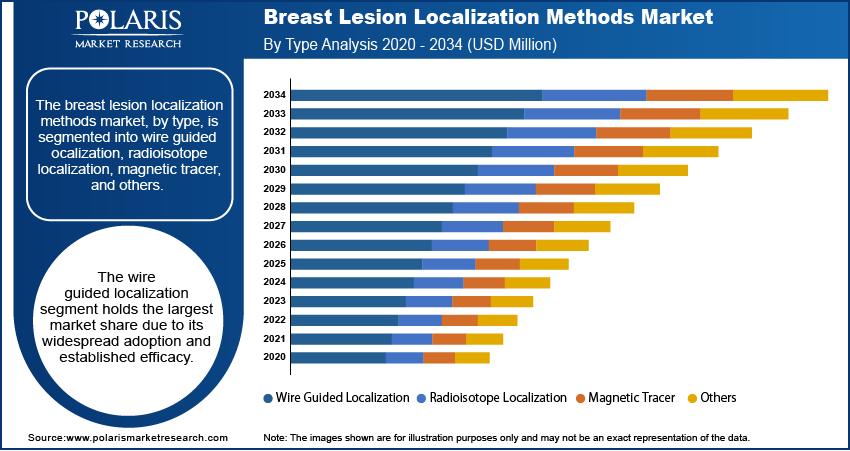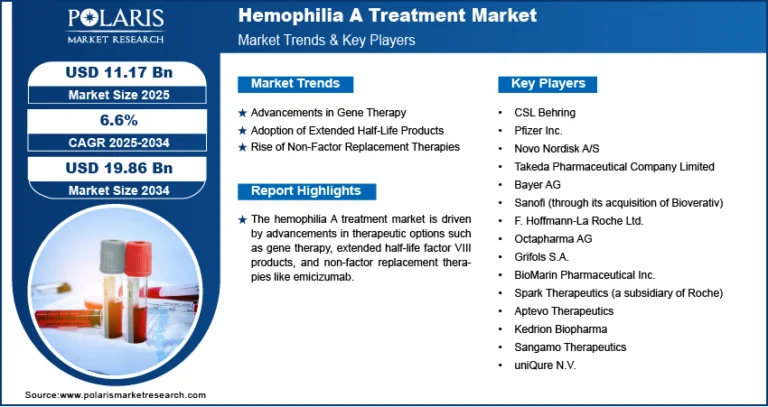Breast Lesion Localization Methods Market expected to reach USD 4,723.06 million by 2034, with a CAGR of 7.6%.

The global breast lesion localization methods market was valued at USD 2,281.05 million in 2024 and is projected to grow from USD 2,443.01 million in 2025 to USD 4,723.06 million by 2034, registering a compound annual growth rate (CAGR) of 7.6% during the forecast period from 2025 to 2034. The breast lesion localization methods market is propelled by factors such as the rising incidence of breast cancer, technological advancements in imaging, and a growing preference for minimally invasive diagnostic and surgical procedures.
Breast Lesion Localization Methods Market – Trends & Insights
- Shift Toward Wire-Free Localization Techniques
Growing adoption of non-wire localization methods—such as radar reflectors, magnetic seeds, and radiofrequency tags—is improving patient comfort and scheduling flexibility during breast-conserving surgeries. - Rising Incidence of Breast Cancer Globally
Increasing breast cancer prevalence and rising awareness around early detection are driving the demand for accurate and minimally invasive lesion localization techniques prior to surgery. - Integration with Advanced Imaging Modalities
Enhanced integration with ultrasound, MRI, and mammography systems is enabling more precise localization, reducing positive margin rates, and improving surgical outcomes. - Ongoing Innovation and Regulatory Approvals
Rapid advancements in medical technology and continued regulatory approvals for novel devices are expanding the portfolio of localization tools available to clinicians, further accelerating market growth.
Market Size & Forecast
- Market Size Value (2025): USD 2,443.01 million
- Revenue Forecast (2034): USD 4,723.06 million
- CAGR (2025–2034): 7.6%
𝐆𝐞𝐭 𝐄𝐱𝐜𝐥𝐮𝐬𝐢𝐯𝐞 𝐒𝐚𝐦𝐩𝐥𝐞 𝐏𝐚𝐠𝐞𝐬 𝐨𝐟 𝐓𝐡𝐢𝐬 𝐑𝐞𝐩𝐨𝐫𝐭:
https://www.polarismarketresearch.com/industry-analysis/breast-lesion-localization-methods-market/request-for-sample
Market Overview
The breast lesion localization methods market is gaining momentum as the healthcare industry emphasizes early detection and effective treatment of breast cancer. Localization techniques are critical in guiding surgeons to accurately identify and remove non-palpable lesions while preserving healthy breast tissue. As minimally invasive and image-guided surgical practices become more widespread, hospitals and cancer centers are increasingly investing in advanced localization technologies.
Technological innovation continues to shape the market landscape, with wire-free and wireless alternatives rapidly replacing traditional wire-based methods. These newer approaches not only reduce patient discomfort but also streamline surgical workflows and enhance accuracy. The increasing global burden of breast cancer, coupled with improvements in diagnostic imaging and public health initiatives, is expected to sustain strong market demand over the coming decade.






